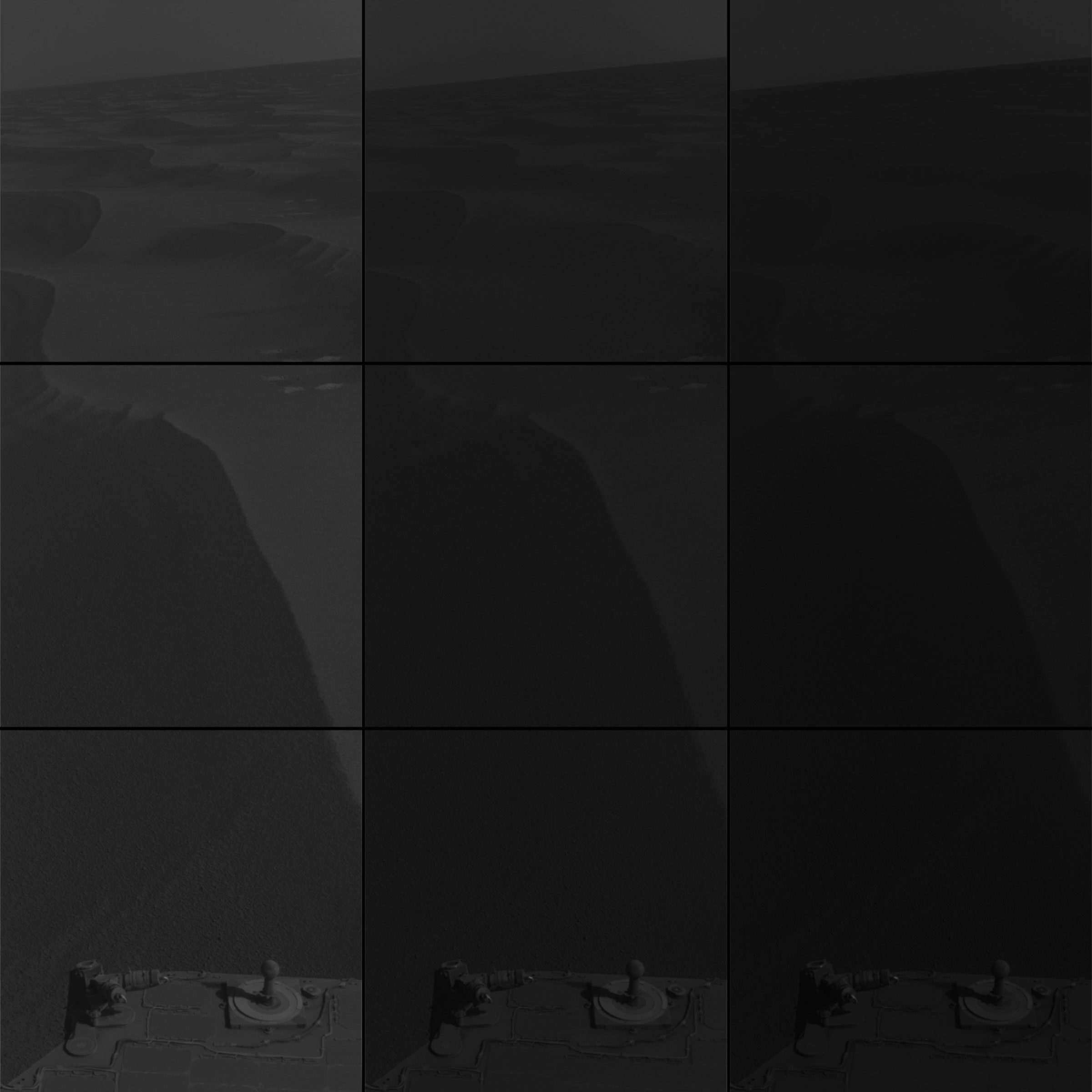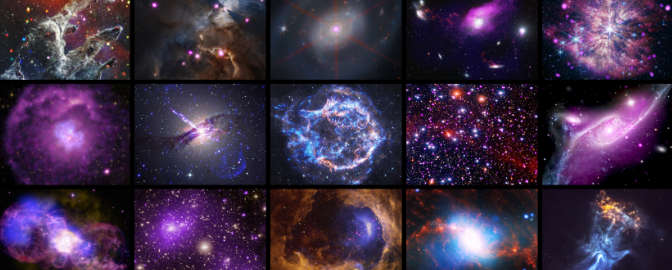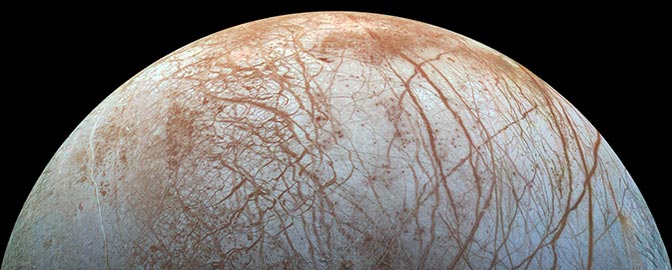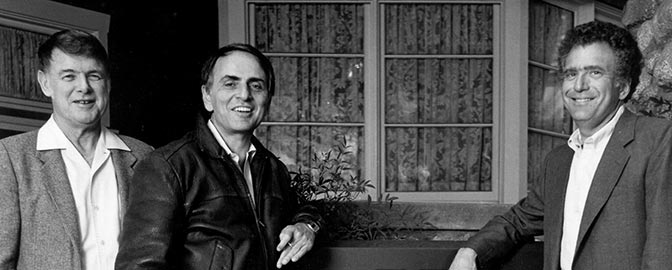Bruce Murray Space Image Library
A Moment in Time

That's the caption submitted along with this photo to the New York Times Lens blog's A Moment in Time project, which solicited people around the world to take a photo near 15:00 UTC on May 2 to document the variety of human experience at a given moment. Humans' presence has extended across the solar system in the form of dozens of autonomous robotic spacecraft. The Mars Exploration Rover Opportunity is now more than six years into a mission originally designed only to last 90 days. It has roved more than 20 kilometers during those six years, and is in the middle of a long trek toward the largest crater it has explored yet. The trek takes it across the wind-whipped dune fields of a region on Mars called Meridiani Planum. The sands are made of grains worn from Mars' basalt volcanic rocks, so the sand is very dark. Here and there, in the troughs separating dunes, lighter-colored bedrock shows through.
The horizon is tilted because the rover was titled, paused in the act of crossing a dune; in reality, Opportunity's horizon is extremely flat. In the foreground, Opportunity's sundial is visible. The sundial, also known as the MarsDial, is both an educational project and an important component of the camera instrument; it serves as a calibration target for the camera. When Opportunity first landed on Mars, the MarsDial's face was different shades of gray, and four different color chips occupied its corners, while its gnomon (the vertical stick) was black. After six years on the Martian surface, the whole thing is covered with a layer of dust that mutes the colors. NASA / JPL-Caltech / Cornell



 Explore Worlds
Explore Worlds Find Life
Find Life Defend Earth
Defend Earth

